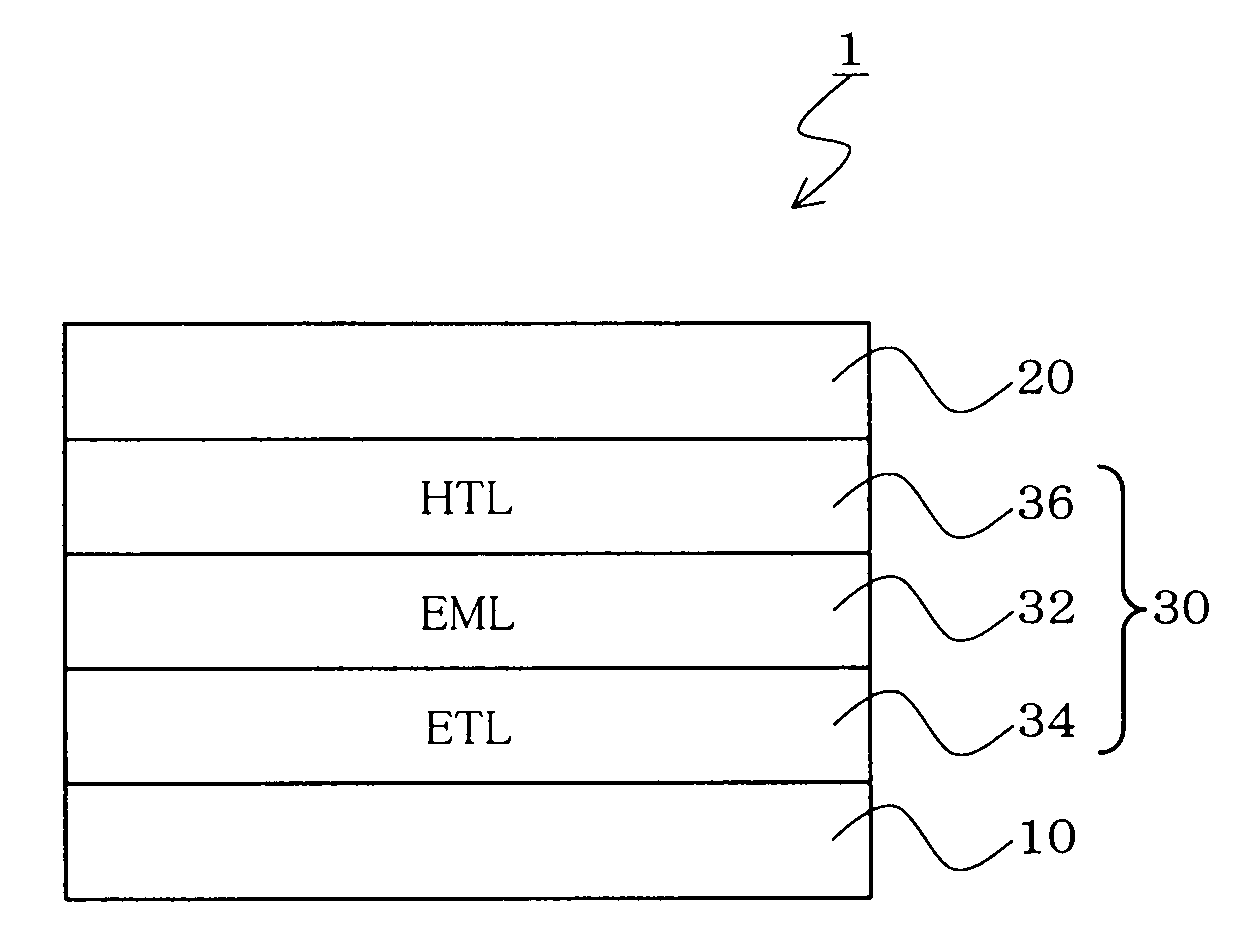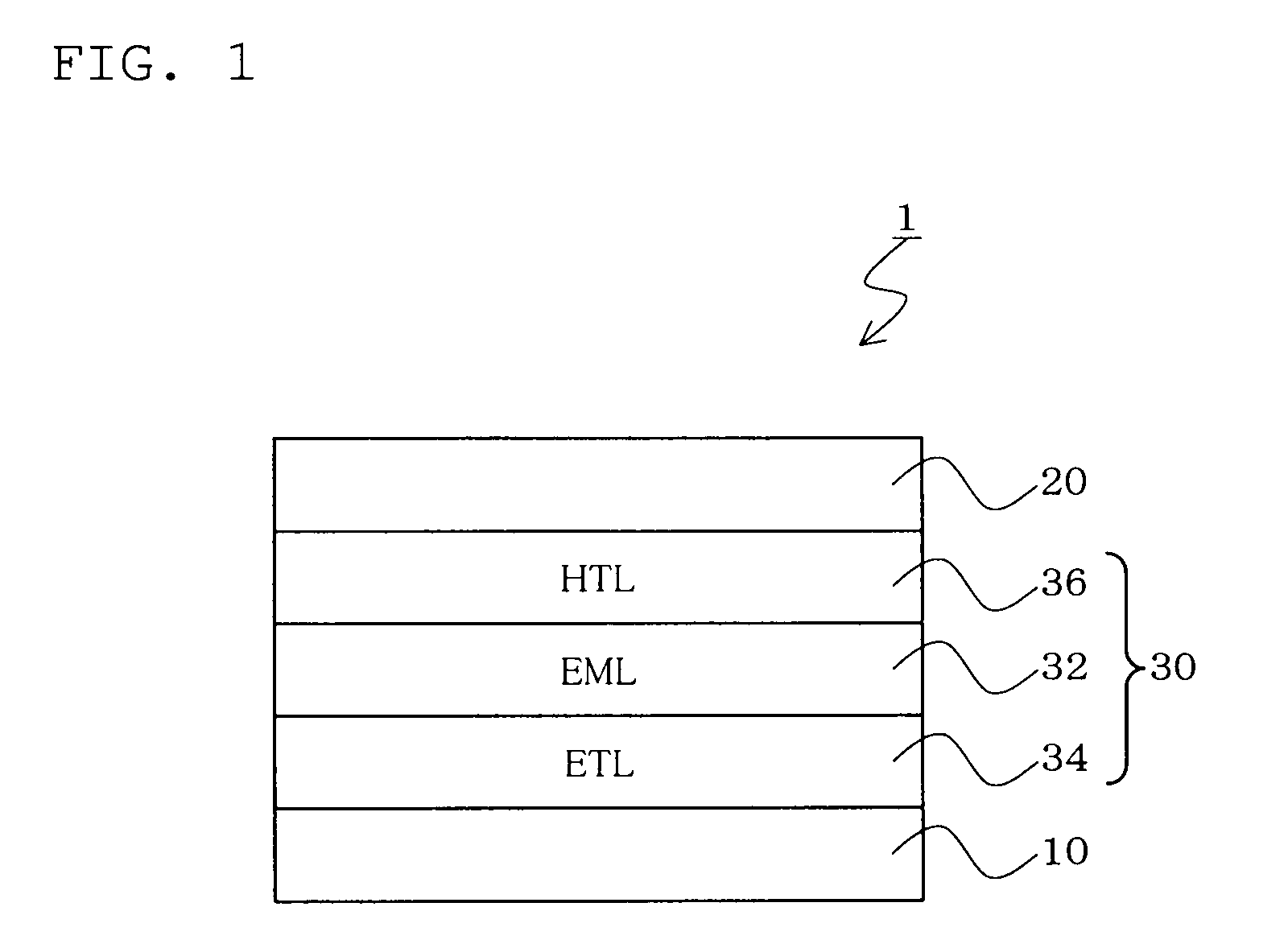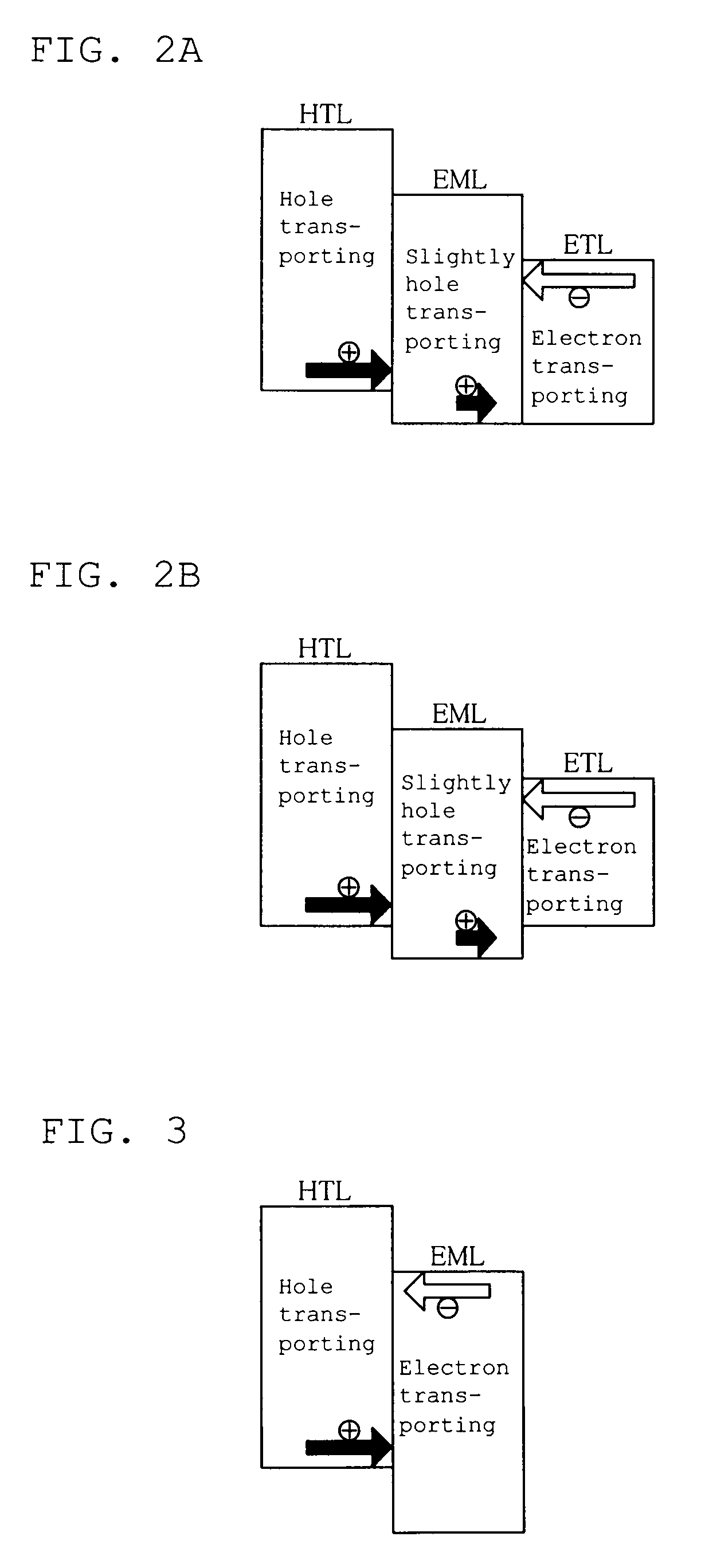Organic electroluminescence device
a technology of electroluminescence and organs, which is applied in the direction of discharge tubes/lamp details, discharge tubes luminescnet screens, electric discharge lamps, etc., can solve the problems of increasing the driving voltage of the device, unable to obtain durable devices, and ill-balanced devices, etc., to achieve low energy loss from the emitting layer to the electron-transporting layer, and high efficiency and long-lived
- Summary
- Abstract
- Description
- Claims
- Application Information
AI Technical Summary
Benefits of technology
Problems solved by technology
Method used
Image
Examples
example 1
Fabrication of an Organic EL Device
[0177]A glass substrate of 25 mm by 75 mm by 1.1 mm thick with an ITO transparent electrode (GEOMATEC CO., LTD.) was subjected to ultrasonic cleaning with isopropyl alcohol for 5 minutes, and cleaned with ultraviolet rays and ozone for 30 minutes. The thus cleaned substrate with transparent electrode lines was mounted on a substrate holder in a vacuum deposition device. First, a TCTA film was formed in a thickness of 95 nm so as to cover the surface of the transparent electrode on which the transparent electrode lines were formed. This TCTA film functioned as a hole-transporting layer. Subsequent to the formation of the hole-transporting layer, the host A and the complex A were co-deposited in a film thickness of 30 nm by resistance heating. The concentration of the complex A was 7.5 wt %. This host A: complex A film functioned as an emitting layer. Subsequent to the formation of the emitting layer, the electron-transporting material A was formed i...
example 2
[0179]An organic EL device was fabricated and evaluated in the same manner as in Example 1, except that the material B was used as the host material. The results are shown in Table 3.
PUM
 Login to View More
Login to View More Abstract
Description
Claims
Application Information
 Login to View More
Login to View More - R&D
- Intellectual Property
- Life Sciences
- Materials
- Tech Scout
- Unparalleled Data Quality
- Higher Quality Content
- 60% Fewer Hallucinations
Browse by: Latest US Patents, China's latest patents, Technical Efficacy Thesaurus, Application Domain, Technology Topic, Popular Technical Reports.
© 2025 PatSnap. All rights reserved.Legal|Privacy policy|Modern Slavery Act Transparency Statement|Sitemap|About US| Contact US: help@patsnap.com



